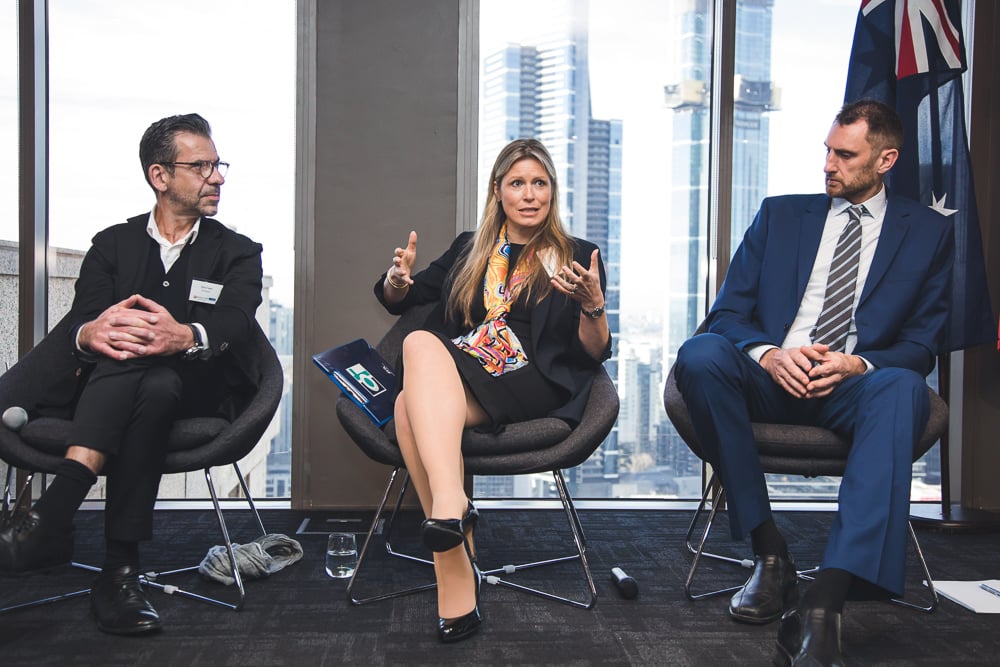Having a workplace diversity and inclusion strategy is becoming the norm these days - and for good reason.
Such strategies allow companies to improve employee wellbeing, reduce staff turnover, and draw from a wide range of skills, experiences and perspectives to meet business needs. The benefits of good diversity and inclusion are abundant for the workplace culture, so why is it still such a hotly debated topic?
Robert Half in partnership with La Trobe Financial held a breakfast panel hosted by Cameron Eustice, Managing Director of Robert Half Executive Search. Panellists Nicole Gorton (APAC Director, Robert Half), Chris Tanti (Founder and former CEO, Headspace), Justine Cooper (Senior Consultant, Brook Graham) and Chris Anstey (Company Ambassador, La Trobe Financial) offered advice to organisational leaders on what can be done by all companies to ensure that diversity and inclusion is relevant, meaningful and sustainable.
Here are some key points to help you start a productive conversation about diversity and inclusion in your workplace.
Why should organisations care about diversity and inclusion?
To answer this, Cooper simply asks, “don’t we all deserve the opportunity to be our authentic and best selves at work?” This question aims to address the fundamentals of diversity and inclusion, suggesting that this base requirement - to be your true self at work - is a foundation for organisations to get serious on.
But beyond supporting people to be their true selves at work, the financial benefits of a good diversity and inclusion strategy are manifold.
While effective diversity and inclusion can benefit companies of every size and industry across Australia, there is still much progress to be made. For example, women only make up 6% of the ASX 200-listed CEOs.* To this, Gorton says every organisation needs to closely examine diversity and inclusion within their organisation, because while some progress has been made, “there’s still a long way to go.”
Setting yourself up for success
Most organisations have good intentions when they design a diversity and inclusion strategy, but good intentions are rarely enough. Company leaders must look beyond policy to ensure that a set-and-forget mentality does not permeate the culture of an organisation and diminish the far-reaching value a diversity and inclusion strategy can have.
Additionally, it’s important to understand what we mean by ‘diversity’ and ‘inclusion’ - these are separate concepts - and to appreciate the relationship between diversity and inclusion. To address these in a way that is valuable, Cooper suggests leaders “start by understanding the why for your organisation.” By understanding and articulating the ‘why’ of both diversity and inclusion, companies move from empty targets to meaningful, participatory work that addresses real needs in the space. From there, Cooper commented, “you can weave that vision through the rest of the organisation.”
Cooper added that there are many tools employers can use to build the momentum of fostering inclusive cultures in the workplace that focus on behaviours and everyday actions, including engaging employee resource groups, leveraging culture surveys, facilitating focus groups and raising awareness of perspectives via strategies such as using reverse or reciprocal mentoring.

It starts at the top
Tanti believes that every employee has a role to play when it comes to implementing diversity and inclusion, but that it ultimately starts with leaders.
He reflected on a role where leadership mandated that all staff be celebrated for their skills as well as their differences. “People were at ease with who they were, and were focused on delivery. Everyone contributed to that culture,” he says.
This doesn’t assume leadership always get it right, and that’s ok, says Cooper. “We’re all human; we get stuff wrong. But where we have the courage and intention to create a safe environment we can learn and grow together to progress.” This goes a long way to opening conversations and improving the broader culture of an organisation, plus ensuring that your diversity and inclusion strategy is an innate part of how you lead and operate.
Recruiting with a diversity and inclusion strategy
Advice for successfully recruiting a diverse workforce is varied, but at the centre remains the focus on people. Anstey suggests strong leaders “show they value the individual. There’s a big difference between being an employee and a human being,” he says.
Tanti offers this: “It’s about making a conscious decision to think about diversity when recruiting, and make it a priority.” This always-on approach is essential for inclusive hiring strategies. Tanti also suggests “leveraging talent from within the community.” By this, he means tapping into the knowledge and lived experiences within your company’s network. Whether that’s talking to employees, consulting with former staff, or even inviting customers to share their opinions, Tanti says this ‘talent’ can provide enormous support for organisations wanting to make their diversity and inclusion practices more robust and evidence-based.
In striving for continual improvement, Cooper asks, “How can you mitigate the unintended negative impact of unconscious bias? Look at your data to understand where your drop off rates are in terms of under-representation. Have you got diversity in your interviewers, have you got guidance out there that constantly reminds people to check their assumptions, as well as their colleagues’ blind spots?” She recommends people get curious, through for example the tests available at Harvard’s Project Implicit. This research produced new ways of understanding attitudes, stereotypes and other hidden biases that influence perception, judgment, and action.

It’s important to remember that an effective diversity and inclusion strategy isn’t just about ticking boxes around gender, race or sexual preference. As Gorton says, it’s “about making your business and your community better.” It takes time, it takes reflection, and there is definitely no one-size-fits-all approach. But by making it a focus in every hire and all the work you do, you can expect a positive return on investment.






